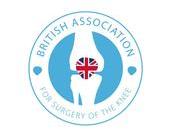BOAST - Investigation and Management of Patients with Problematic Knee Replacements


Date Published: August 2020
Last Updated: August 2020
Background and justification
Knee replacement is a successful procedure for the treatment of joint pain caused by arthritis. However, it is well recognised that 10-20% of patients report pain, stiffness or dissatisfaction after surgery1. These symptoms have a wide range of causes and as such these patients need careful assessment and supportive care. To optimise outcomes and to identify potentially treatable causes, thorough and prompt Consultant led investigation is required and referral to specialist regional MDTs as needed.
Inclusion:
All patients who experience problems following total or partial knee replacement surgery. Patient dissatisfaction may include, but is not limited to pain, perceived functional disability, feelings of instability or knee stiffness.
Summary of Audit Standards
ORGANISATION:
- Patients must have access to Consultant Arthroplasty outpatient review to allow timely initiation of investigations, particularly when infection is suspected. Second opinions are encouraged, as are regional referrals to specialist units in more complex cases and in cases of diagnostic uncertainty.
- Initial investigation should include: clinical examination, X-Ray imaging and serological screening tests for infection (e.g. CRP, ESR +/- PV). If infection is suspected then further investigation according to BOAST ‘Investigation and Treatment of Peri- prosthetic Knee Joint Infection’ should be undertaken. Infection should be diagnosed using specific validated criteria (e.g. ICM 2013) and discussed at a regional MDT.
- Investigation is aimed at identifying a cause for the patient’s problem. A number of SPECIFIC surgically correctable causes of a problematic knee replacement are recognised:
• Stiffness and Soft tissue problems (wound breakdown, synovitis, impingement, haemarthrosis)
• Patellar / component malPosition / component malrotation
• Extensor mechanism dysfunction
• Component loosening
• Infection
• Fracture
• Instability
• Component wear / breakage. - Full weight bearing AP and lateral, long-leg alignment and patella skyline radiographs should be performed in all patients.
- In partial knee replacement a PA view in 45 ° flexion (Rosenberg, for medial UKR) or 30° (Schuss view, for lateral UKR) should be performed2.
- Component loosening should be assessed with plain radiographs. CT scans may offer additional information and SPECT CT may have an additional negative predictive value in cases of diagnostic uncertainty.
- More complex investigations, (i.e. more than plain XR, bloods +/- aspiration biopsy), should be performed within the revision arthroplasty MDT service to ensure that investigations are appropriately targeted. Early referral to a regional MDT following initial investigation is recommended. Bone scan and minor operations have no routine role to play.
- The decision to proceed to revision surgery should be based on the identification of a SPECIFIC problem; in the absence of a firm diagnosis MDT discussion is essential because there is a lower chance that surgery will benefit the patient.
- It is recognised that in a proportion of patients no SPECIFIC cause for their problem will be found. Each unit should have a pathway for their subsequent management, which may involve the pain services, physiotherapy or other specialist teams.
- An MDT discussion is recommended for every patient with a problematic knee replacement in whom a SPECIFIC cause is not identified. A treatment plan should be formulated as early as possible following presentation.
- Units undertaking the surgical management of patients with problematic knee replacements: (1) must be part of a network with access to regional MDT meetings and (2) should be achieving (or projected to achieve) suitable volumes of these procedures and meet quality metrics for these procedures (see footnote*). MDT discussion should be standardised, recorded and auditable.
- Complex cases should be routinely discussed at a regional network MDT. A complexity-grading tool, such as the Revision Knee Complexity Classification system3, may be used to stratify patients for network discussion.
- Each unit should submit data to national databases (NJR, BAJIR) to monitor performance against national benchmarks and standards.
- The benefit to the patient of treating pain, anxiety and depression irrespective of cause should not be underestimated and treatment should not be delayed whilst investigations progress.
Evidence Base:
1. Baker PN, Van der Meulen JH, Lewsey J, Gregg PJ. The role of pain and function in determining patient satisfaction after total knee replacement. J Bone Joint Surg Br. 2007 Jul;89-B(7):893–900.
2. Mandalia V, Eyres KS, Schranz PJ, Toms AD. Evaluation of Patients with a Painful Total Knee Replacement. J Bone Joint Surg Br. 2008;90-B:265-271.
3. Phillips JRA, Al-Mouazzen L, Morgan-Jones R, Murray JR, Porteous AJ, Toms AD. Revision knee complexity classification—RKCC: a common-sense guide for surgeons to support regional clinical networking in revision knee surgery. Knee Surg Sports Traumatol Arthrosc. Springer Berlin Heidelberg; 2019 Mar 8;27(4):1011–7.
Footnote
*This document refers in several places to networks and the designation of units that do or don’t undertake knee revision procedures. There had previously been a proposed programme led by NHS England to establish these networks. However, this has been paused due to COVID-19. Until such time as that process restarts, we encourage regions to consider whether networks could be set up if these are not already in place. Specific consideration should be given as to designating of the centres that will and will not undertake these procedures, bearing in mind the following factors:
- In some regions there are already patterns of referral locally that would mean it is obvious which units should be the main centres that continue with knee revisions, but not in all.
- Existing volumes of procedures should be a factor in this decision process, in order to consolidate expertise in those units with the greatest experience, but this may not be the only factor. In general, we would expect to see that units and surgeons who are undertaking revision knee replacement do so regularly; units should be expected to achieve an annual unit volume of 30+ and an individual surgeon achieving a volume of 15+ (though consideration will need to be given to surgeons on extended leave due to sickness/maternity/etc, those that are winding up or down at the beginning/end of career, disruption due to COVID-19 and other similar issues). This should be audited annually by the network along with quality metrics.
- If a number of smaller units propose to rationalise their knee revision work at one hospital, this could mean higher volumes achieved at a site previously undertaking lower numbers, so both past performance and future projected workload should be considered.
- We also recognise that the COVID-19 situation has meant that some hospitals and regions are reorganising the sites at which care is delivered (e.g. hot/cold splits), and this may influence the choice of which units continue to do revision knee work.
